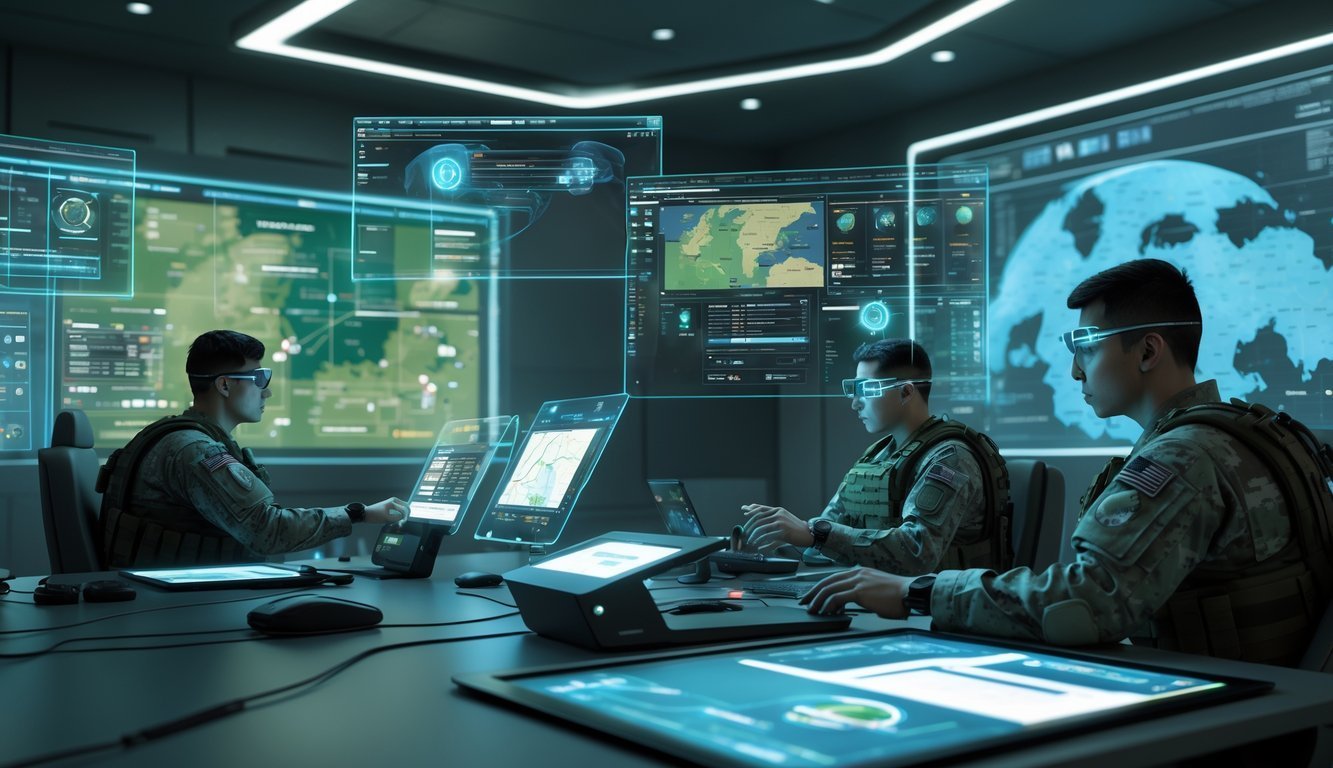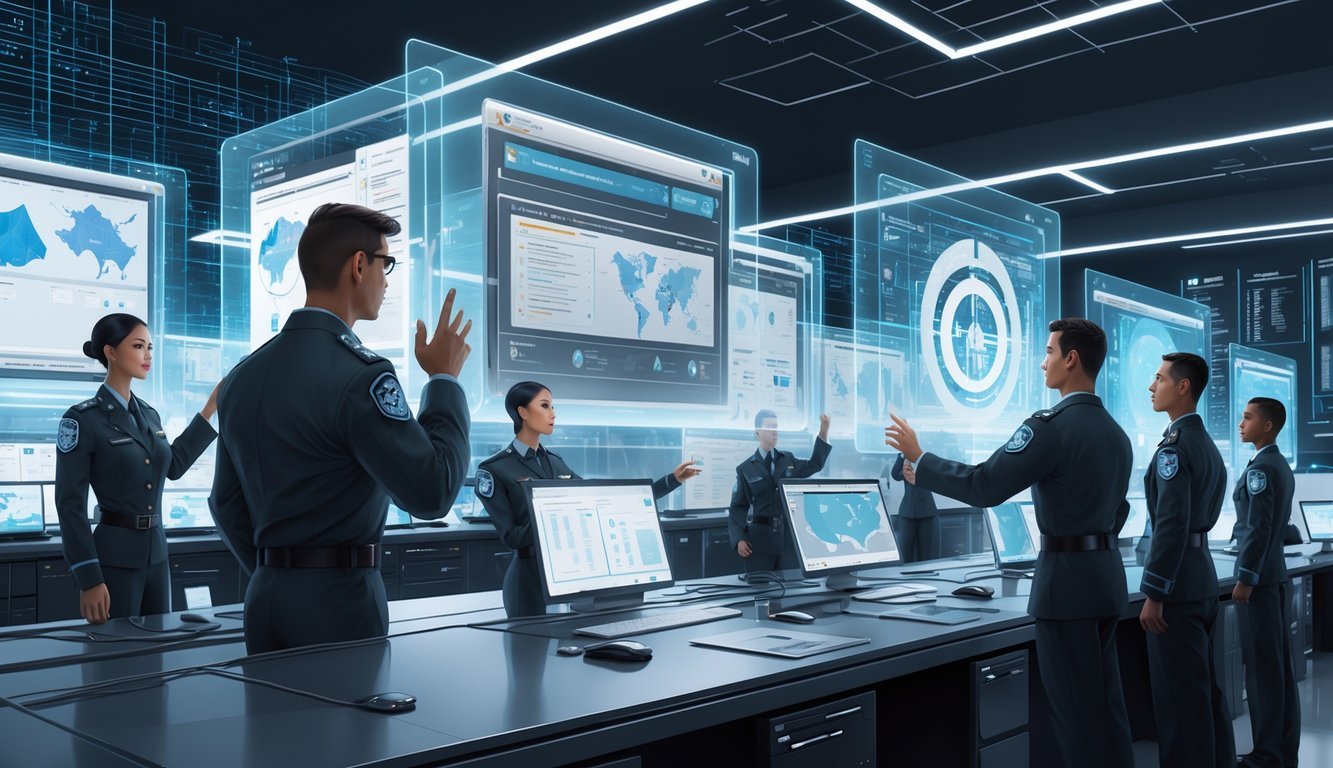PsychNewsDaily Publishers
100 Summit Drive
Burlington, MA, 01803
Telephone: (320) 349-2484
PsychNewsDaily Publishers
100 Summit Drive
Burlington, MA, 01803
Telephone: (320) 349-2484
Army Virtual Desktop provides secure remote access to a Windows environment on various devices, enabling flexible work while maintaining data protection through Army credentials and cloud technology.

If you’re in the Army or work with its systems, chances are you’ve heard about the Army Virtual Desktop. The Army Virtual Desktop (AVD) lets you access a secure Windows desktop from almost any device—at home, on the road, wherever you need to be. You use your Army credentials to keep things safe, but you get the freedom to work remotely.
You can use AVD on Windows PCs, Macs, iPads, or Android phones. You don’t need special hardware to connect.
With just an internet connection, you’ll get to your Army work desktop as if you were sitting at a government machine.
The virtual desktop makes Army work more flexible while protecting important info. It’s a solid option if you want to stay connected without being stuck at one desk.

Army Virtual Desktop gives you access to your work computer environment from nearly any device. It runs in the cloud, so you don’t need a typical PC to use Army systems.
You’ll log in securely and work with Army programs wherever you are.
Army Virtual Desktop (AVD) is a service that gives you a full Windows desktop remotely. You can use Army software like Outlook, Teams, and other Microsoft 365 tools from anywhere.
The system runs on Microsoft Azure, so your desktop stays safe online.
When you use AVD, you access a virtual machine that looks and feels like a regular Army computer. Your Army 365 credentials let you log in with single sign-on.
This keeps things simple and secure. You can work as if you’re on your office desktop, even if you’re not physically there.
Army Azure Virtual Desktop connects your device to a virtual Windows 11 machine in the cloud. When you log in, you see the full Windows interface through an app or web browser.
The system streams everything to your device, so all the programs actually run in Azure—not on your device.
With this setup, you don’t need a powerful laptop or tablet. Even older devices handle it well, since they just display the screen and send your keyboard or mouse input.
All your data stays in government cloud systems, which boosts security and control.
If you have more than one Army account, you’ll use different virtual “workspaces” to switch between them safely. This keeps your work separated but easy to access.
Army Virtual Desktop works on a bunch of devices. It supports Windows PCs, macOS computers, iOS phones and tablets, and Android devices.
You don’t need a special Army computer. You can use your own device, as long as you follow security rules.
Using your personal laptop or phone means you can work remotely or in the field with way more flexibility.
The AVD app or web access adapts to different screen sizes and input types, so your experience stays pretty consistent.
Just make sure your device follows Army security guidelines, like keeping your antivirus updated and using proper access controls.
That keeps your data and the Army’s systems safe, whether you’re on a personal or government device.

You get more ways to work wherever you are, and you can use your own devices safely. Security tools keep your data protected and things running smoothly.
Setup and connection feel pretty simple, and everything fits right in with existing Army networks.
With the Army virtual desktop, you can work from almost anywhere that’s got internet. It supports your need to be agile, letting you join your team and get to important files on laptops, tablets, or phones.
You stay productive at the base, at home, or even when you’re deployed. Virtual desktops load quickly and update themselves, so your tools are always ready—no long waits or manual updates.
Cloud technology also means you don’t need as much physical hardware, and software patches happen faster.
The Army’s Bring Your Own Device (BYOD) policy lets you securely access Army systems on your personal laptop or tablet.
You use your Common Access Card (CAC) and Army 365 sign-on, so only you get into the system.
Personal device access is great for National Guard and Reserve members who need to keep up with training and work but don’t always have Army-issued equipment.
Security matters. The virtual desktop uses strong cybersecurity tools to defend against threats.
Your data stays in the cloud, not on your device, so if you lose your laptop or phone, there’s less risk.
Single sign-on through Army 365 credentials ties your access to your verified identity.
Controls balance security with privacy, keeping your information confidential.
Systems get patched and updated often through a unified network, stopping problems before they start.
Getting started is pretty straightforward. Download the virtual desktop client and use your CAC to log in.
Setup steps walk you through connecting to the Army’s secure Azure Virtual Desktop environment.
The virtual desktop works with existing Army tools like Google Workspace and Microsoft Teams, so you can collaborate without switching platforms.
It fits right into the Army’s unified network, keeping your data protected whether you’re at the base or working remotely.

Here are answers about getting the Army Virtual Desktop on your Mac, where to find the access link, and how to log in. You’ll also see how to register, set things up, and use the Army AVD workspace URL.
You can grab the Remote Desktop client for Mac from the official Microsoft website or the Mac App Store. Make sure you get the latest version for the best results.
Usually, your unit or IT support team gives you the official link to access the Army Virtual Desktop. It often comes through Army communication channels or email.
First, install the Remote Desktop client. Then, use your Army 365 credentials and your Common Access Card (CAC) to log in.
Follow any extra prompts for security verification.
You’ll need to create an account through the Army’s access portal, like https://myaccess.microsoft.com. Registration might require your CAC and approval from your unit.
Start by installing the Remote Desktop client on your device.
Set up your CAC for login by following the instructions for Windows or Mac.
Finally, connect using the workspace URL or access link you got from your unit.
The workspace URL takes you straight to the Army Virtual Desktop environment. Just type it into your Remote Desktop client.
After that, log in with your CAC and Army credentials. That’s all you need to start your virtual session.